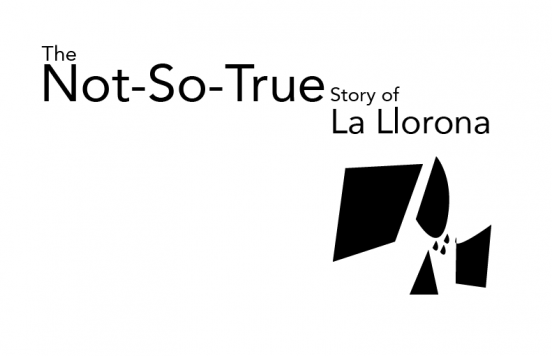When I first found out that the task was to use Twine, I was excited! I have a background in programming, and thought this task is going to be a piece of cake! But it wasn’t the case. Like any language, Twine requires a learning curve to know how to write the code in order to achieve the results you want. For me the creation process started with the story. I wanted to include a story that was personal in a way, yet interesting in general. While having dinner, a common recurrence happened, having my son eat his dinner by telling him stories. The most interesting part for me, was my inner monologue that goes through my head every time we are in this situation, most specifically, when my husband decides to tell the story of “La Llorona” to my four-year-old son. So, if you want to hear the story, click here.
The Not-So-True Story of La Llorona.html
The idea sparked, I was going to create my Twine story about La Llorona, and I was going to put sound, and images, and everything possible, making it very mysterious and interesting. But it wasn’t as easy as I planned. Once I was working with Twine, it took me about five times the amount of time I expected. The code was not as easy to create as I originally thought. This is understandable, since writing hypertext can be different in different platforms. At the end I was happy with the result, I was able to identify different characters in the story by using colour. The strategy that worked was to first focus on the design of the story, how would we provide some options for a non-linear narrative, yet keep control of the story. I created the story by using cards, and arranging them, as I was writing. Then, the process was transferring the cards to twine, which worked well. At the end of the game, with this text, hypertext, my peers would also get to know a part of who I am, in an indirect way.

olivia marin
February 21, 2021 — 10:41 am
Hi Adriana,
That was a lovely insight into your home life. I like the idea of writing out the story first on cards and organizing your thoughts before trying to directly make the story on Twine. You have made a beautiful introductory page and I appreciate the changes in font and spacing that, having made mine own twine, I know can be quite tedious. Your use of colour to switch between voices in the story is very effective. I also thought about including sounds in my twine, after looking into it and considering the copyright elements I ended up using song lyrics and hoping that my readers would be able to sing the songs to themselves. I think the creation of these types of non-linear stories are inherently more complex than we think they will be at first. Thanks for sharing your dinner table with us virtually.